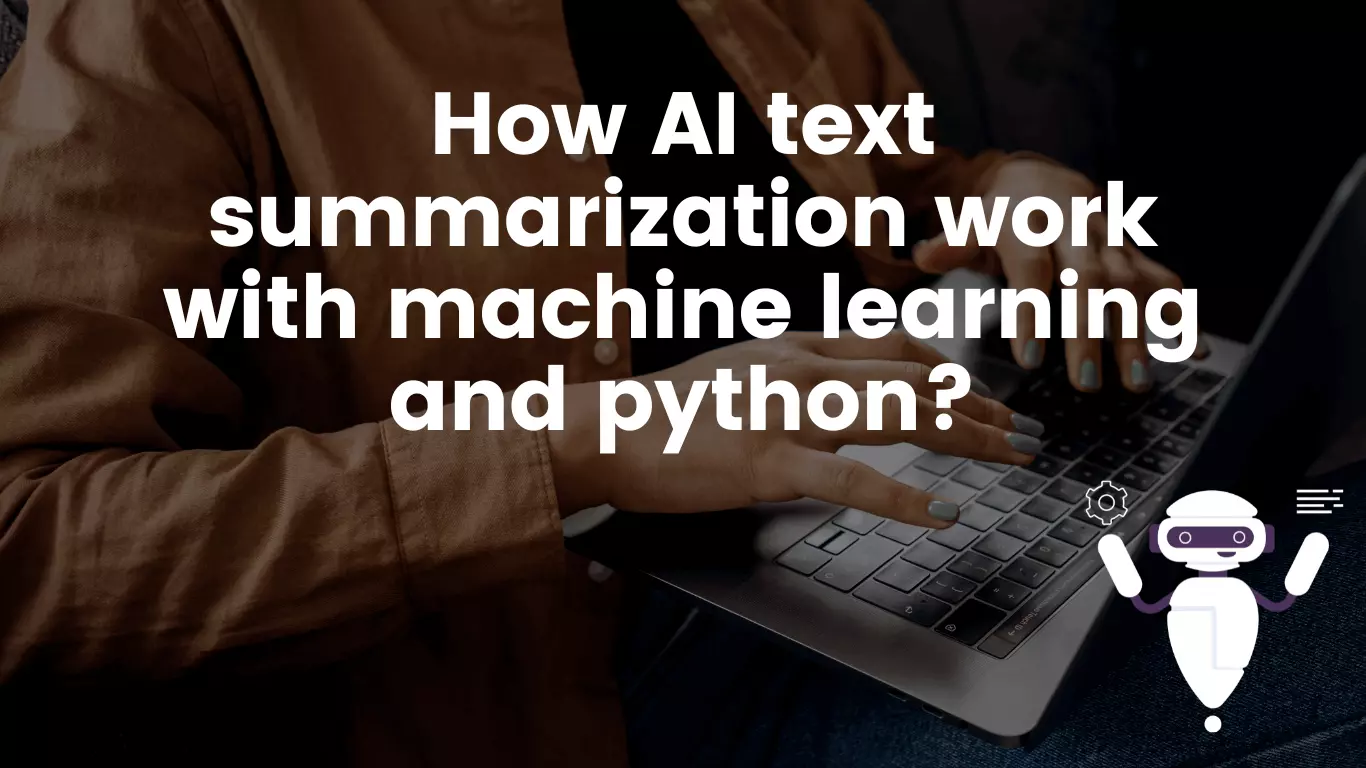How Does AI Text Summarization Work with Machine Learning and Python?

Before you start diving into this article, you should be clear about a few things. Artificial intelligence is a massive field. It does not refer to one technology, it refers to a slew of technologies. Machine learning (ML) is merely a subset of artificial intelligence. If you hear the words NLP (natural language processing) then that too is a subset of AI.

Now what is Python? Python is a programming language that is popular for developing AI software. There are two reasons for that; it is a very powerful language, and it has a massive community.
As such many of the AI text summarizers and other content optimizers you see online are developed using Python. Now that all the relationships between the various buzzwords have been straightened out, let's answer the question of how text summarizing works with the help of ML and Python.
What is Machine Learning?
Machine learning is a branch of AI that is concerned with programming computers to learn and draw conclusions from some given data on their own. Normally, if you want a computer to do something for you, you have to explicitly program it to do the specific task. With Machine learning though, you can teach it to do a certain task, and it can do it on its own.
A common example of ML usage is in recognizing things inside images. That is actually the driving technology behind NLP. A computer is taught to recognize the shapes of letters and characters inside images. That way they can understand if some image has a written message in it or not.
How Does Machine Learning Help with Text Summarization Using Python
Since Python is such a popular platform for developing AI algorithms and models, it already has a litany of preexisting libraries. Many of these libraries are related to text manipulation. Some common Python libraries for text processing are:
- Gensim
- Natural language toolkit (NLTK)
- T5
- GPT-3
And you can find many open-source libraries on Hugging Face as well. Since there are so many libraries, there are many approaches to text summarization as well. These libraries contain a variety of pre-built functions and algorithms that you can tune for your own use.
It is important to note that they all employ "AI", as in they use the techniques and principles of AI to function and process text.
Text Summarization With NLTK
The reason we are using NLTK is that it is an open-source text-processing library. So, anyone can use it without having to pay for anything.
Another reason is that there is a high chance that an online summarizer you use utilizes NLTK. In fact, if you are using a free summarizer, then it is using NLTK because paid tools use GPT-4 instead.
Here is how a standard AI text summarizer works by using NLTK:
Tokenization
The programmer inputs some text to the library and asks it to tokenize it. Tokens are the smallest "atoms" that a text passage can be broken into. NLTK allows you to treat either complete words as tokens, or complete sentences.
Both approaches have their advantages, for example, the frequency of a word in word tokens may imply that the term is important. And in sentence token mode, there is more context to decide whether something is important or not.
This happens in the back end of a summarizer, so you don't see it.
Removing Stop Words
A stop word refers to any words that you want to ignore in your text processing. NLTK has a prebuilt list of stop words, so you don't need to add them yourself unless you really want to.
Common stop words that are filtered are:
- In
- Is
- An
- I
And many others. These words do not add any meaning to the text, thus they can be ignored.
Stemming
Stemming is a process in which word forms are reduced to their "Stem" word. For example, "fighting" has the stem "fight" and so does "fighter". Stemming is done on the tokens that are left after stop words have been removed.
There are multiple types of stemming available in NLTK, it is up to you which one you want to use.
POS Tagging
POS or parts of speech are the various identifiers that are used in grammar. For example, in a sentence, we have verbs, objects, subjects, nouns, pronouns, and adjectives. These are all parts of speech.
So, the stemmed list is tagged with parts of speech.
Chunking and Chinking
Chunking means to recognize phrases and chinking refers to excluding patterns from the text.
With Chunking and Chinking used together, you can create a semantic representation of your text which can be analyzed to create a summary.
Analysis
There are many different ways of analyzing the text and many different techniques. They are all available through NLTK and you have to use one that suits your needs.
Some popular analysis methods are:
- Frequency distribution
- Dispersion plot
- Concordance
After the analysis is done, NLTK creates an extractive summary of the given text that is much shorter than the original text. This summary is shown by the summarizer to the end user, and all of it takes less than a minute to happen.
Conclusion
That was a basic rundown of how AI text summarization works with machine learning and Python. To give an explanation we used NLTK which is an NLP (hence utilizing machine learning) library in Python. We gave simple explanations about most of the steps that are involved. Hopefully, this article piqued your interest in AI text summarization using Python and inspired you to research more about it.
